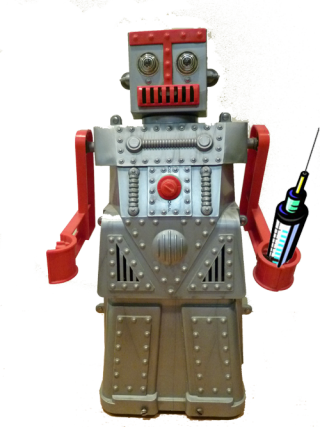Rutgers Latest to Design Robotic Venipuncture Device
But will patients embrace a robotically inserted needle?
by Dennis Ernst • March 09, 2020

Over the years, Phlebotomy Today has reported on no fewer than 4 attempts to create robotic devices that automate venipunctures including the Roblood, Veebot, Bloodbot, Phlebot, and the Singapore Project. The latest entry into the arena is a yet unnamed device being developed by Rutgers University in New Jersey as reported by CNET and in Technology.
According to the Technology abstract, Rutgers researchers conducted human trials of an automated robotic venipuncture device using ultrasound imaging and miniaturized robotics to identify suitable vessels. Once identified, a needle is robotically guided toward the center of the vein. After 31 volunteer patients, they report an 87% success rate, 97% on non-difficult veins (n=25). The average duration of the procedure was 93 seconds, plus or minus 30 seconds.
The device seems to be an advanced version of one Phlebotomy Today reported about in 2017, also by Rutgers' engineers, and incorporates sample processing and analysis into its design. Funded by the U.S. National Institute of Health (NIH) and published online, once the sample is obtained, a sample handling module transfers it from the venipuncture component to blood collection tubes, and then employs a peristaltic pump to deliver the sample from the tubes to the analyzer.
A related article in CNET reports university officials as claiming studies show health-care professionals are successful only 73% of the time when patients have visible veins and only 60% of the time when veins aren't palpable. Results of a College of American Pathologists (CAP) Q-Probe published in the Archives of Laboratory Medicine, however, surveyed phlebotomy practices at 70 hospitals and found the average first-attempt success rate for venipunctures on all patients (including visible and palpable-only veins) to be 95%.
Related Posts and Information
overall rating: my rating: log in to rate
automate Bloodbot YouTube Roblood robot Veebot
